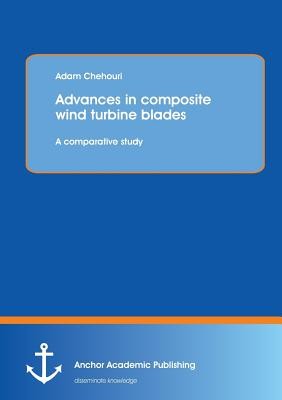
- We will send in 10–14 business days.
- Author: Adam Chehouri
- Publisher: Anchor Academic Publishing
- Year: 2014
- Pages: 86
- ISBN-10: 3954892308
- ISBN-13: 9783954892303
- Format: 14.8 x 21 x 0.5 cm, softcover
- Language: English
- SAVE -10% with code: EXTRA
Reviews
Description
In the wind industry, the current trend is towards building larger and larger turbines. This presents additional structural challenges and requires blade materials that are both lighter and stiffer than the ones presently used. This study is aimed to aid the work of designing new wind turbine blades by providing a comparative study of different composite materials. A coupled Finite-Element-Method (FEM) - Blade Element Momentum (BEM) code was used to simulate the aerodynamic forces subjected on the blade. For this study, the finite element study was conducted on the Static Structural Workbench of ANSYS, as for the geometry of the blade it was imported from a previous study prepared by Cornell University. Confirmation of the performance analysis of the chosen wind turbine blade is presented and discussed including the generated power, tip deflection, thrust and tangential force for a steady flow of 8m/s. A homogenization method was applied to derive the mechanical properties and ultimate strengths of the composites. The Tsai-Hill and Hoffman failure criterions were both conducted to the resulting stresses and shears for each blade composite material structure to determine the presence of static rupture. A progressive fatigue damage model was conducted to simulate the fatigue behavior of laminated composite materials, an algorithm developed by Shokrieh.
EXTRA 10 % discount with code: EXTRA
The promotion ends in 18d.22:12:01
The discount code is valid when purchasing from 10 €. Discounts do not stack.
- Author: Adam Chehouri
- Publisher: Anchor Academic Publishing
- Year: 2014
- Pages: 86
- ISBN-10: 3954892308
- ISBN-13: 9783954892303
- Format: 14.8 x 21 x 0.5 cm, softcover
- Language: English English
In the wind industry, the current trend is towards building larger and larger turbines. This presents additional structural challenges and requires blade materials that are both lighter and stiffer than the ones presently used. This study is aimed to aid the work of designing new wind turbine blades by providing a comparative study of different composite materials. A coupled Finite-Element-Method (FEM) - Blade Element Momentum (BEM) code was used to simulate the aerodynamic forces subjected on the blade. For this study, the finite element study was conducted on the Static Structural Workbench of ANSYS, as for the geometry of the blade it was imported from a previous study prepared by Cornell University. Confirmation of the performance analysis of the chosen wind turbine blade is presented and discussed including the generated power, tip deflection, thrust and tangential force for a steady flow of 8m/s. A homogenization method was applied to derive the mechanical properties and ultimate strengths of the composites. The Tsai-Hill and Hoffman failure criterions were both conducted to the resulting stresses and shears for each blade composite material structure to determine the presence of static rupture. A progressive fatigue damage model was conducted to simulate the fatigue behavior of laminated composite materials, an algorithm developed by Shokrieh.


Reviews